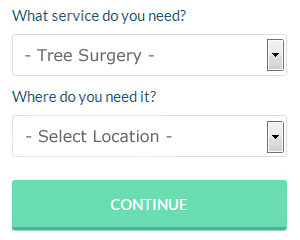Oxford Tree Surgeon Oxfordshire: Trees in your garden and around your property in Oxford, add structure, style and substance to what can often be a 2 dimensional landscape. But when neglected or affected by extreme weather conditions, for example flooding or storms, trees can be a bit of a problem. Seeking the advice of a seasoned tree surgeon in Oxford, is the best option when work needs to be undertaken on your trees.
Using a non-qualified individual for tree work or attempting to do it on your own, could cause damage to property, harm your trees, or even lead to injury or death. However, tree work is certainly not a safe occupation, even for experienced tree surgeons, who know about all the dangers. There are an average of 140 serious injuries and three deaths each year within the industry, making it one of the most hazardous jobs in the UK and certainly not for novices to attempt.
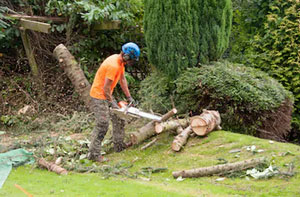
A poorly maintained or damaged tree can also pose a threat to life, with around five people each year being killed by falling trees or branches in Britain. You may be liable for any compensation to a third-party due to the consequences of your actions, if you hire someone to perform tree work and property is damaged, or an injury occurs. This is why hiring a qualified Oxford tree surgeon to do the work on your trees is imperative. (All figures are from HSE UK).
There are 2 principal professional trade bodies, at least one of which a skilled Oxford tree surgeon should be a member of. The membership and professional standing of any tree surgeon in Oxford can be checked on the websites of both the International Society of Arboriculture and the Arboricultural Association. To discover whether any particular local tree surgeon has recognised ARB Approved Contractor status and has membership of either of these associations, you can check out this website.
You will be able to get in touch with these trade bodies for mediation assistance and for advice and help at any point, if there's an issue during or after any tree work has been carried out.
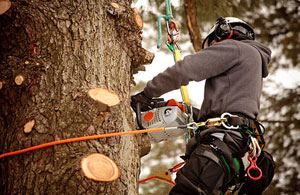
If somebody offers you an estimate for any tree work and they're not on this directory, you should respectfully decline their offer of work and find an approved contractor. It is best to get at least 3 quotes from different companies in Oxford, once you have carefully checked their professional memberships and qualifications. You should ask the questions below whilst obtaining the quotations, making it crystal clear that you need to know the answers because of the risks of the work involved:
- What is your level of insurance cover? As stipulated by the AA and ISA, your tree surgeon should be able to produce an insurance certificate covering a minimum of five million pounds public liability.
- Have you got documentary verification of your professional membership, qualifications and a NPTC certificate for the use of a chainsaw? Any worker/tree surgeon using a chainsaw, must by law have NPTC/LANTRA certification. Qualifications might include City & Guilds Certificates and National Diplomas in Arboriculture.
- Do you give written quotations? Only ever accept a written quote. NEVER accept a verbal quote alone.
- Could I contact some former clients to check the quality of your work? Independently examining any recent work is always sensible.
The written quote that you are given must include clear and accurate specifics of the proposed work. It should include details of any trees which could be protected, and the steps necessary to get permission to work on them, and also state whose responsibility it is to remove debris, tree branches and stumps. Double check that VAT has also been included on the quote. It is very important to recognise that you've got a responsibility for hiring only competent people to work on your property and trees.
PRIOR TO WORK - Your chosen Oxford tree surgeon will need to make enquiries into the possibility of any trees being protected in your area and make the appropriate steps to make sure that any tree work can get the green light from the local authority. Finding that a tree has protected status doesn't imply that work cannot be carried out, since even protected trees need to be maintained in order to cut back dead or dying wood and ensure the safety of the public.
If your property in Oxford is within a conservation area then at least six weeks written notice must be given to the Local Planning Authority (LPA) before any tree work can be conducted. This written notice is not required if the tree trunk is less than 7.5 centimetres in diameter when measured at 1.5 metres from the ground. If the thinning or pruning of a protected tree's branches is needed to promote and sustain growth, written notice is also not necessary.
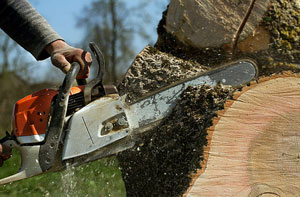
On site they'll perform a full assessment of your tree's health and decide on the required remedial treatment and how the required outcome can be achieved with safety in mind. This involves performing a full risk assessment to include your property, public spaces and any sections of a neighbour's property that could be impacted by falling branches and debris. The level of protection needed and the amount of operatives required, will also be ascertained at this point. This will include various safety precautions along with PPE to guarantee the safety of passers-by and adjacent property.
ON THE DAY OF WORK - Before any climbing, cutting of branches or tree felling commences, safety measures and barriers will be put in place to keep unauthorised persons and passers-by away from the area where work is going on. When there is the chance of debris and branches falling onto a public highway, it might be necessary to briefly halt the traffic.
Different types of tree work will demand that the tree surgeon has different degrees of protection. When doing chainsaw work, they will at the very least be wearing special protective clothing to avoid cutting injuries to the hands, legs and torso. Every worker involved in the operation, must at all times be wearing high-vis clothing, and head and eye protection.
If any working at height is involved, ladders and climbing equipment will have to be used, and extra personnel will be there to help with the removal of high branches and large sections of tree trunk. A skip or other means of transporting the waste materials away will be stationed as close as possible to the work area, therefore it is a good idea to inform your next door neighbours of the need for easy access.
AFTER COMPLETION OF WORK - All of the waste and branches will be transported away and the site cleared of any debris, once all of the tree work has been accomplished. Particularly in the case of any protected trees, a certificate of work done should then be created by your tree surgeon, which will be signed off and a copy given to you. If any public areas required safety measures, this protection will be taken away and highways and paths will be re-opened to the public.
Issues or problems should be put right immediately by approaching your tree surgeon directly. If there's any further dispute, and your tree surgeon is a signed up member of a trade body, you can get guidance and advice from the Arboricultural Association or the International Society of Arboriculture so as to reach a satisfactory conclusion.
Local Oxford tree surgery services are most likely have the telephone dialling code 01865 and the postcode OX1. They'll work in Oxford itself, together with nearby areas like Risinghurst, Wytham, Cowley, Barton, Osney, Sunningwell, Marston, Iffley, Sandford, Summertown, Chawley, Cumnor, Littlemore, Headington, Kennington, Whitecross, Eynsham, Garsington, Wolvercote, and these postcodes: OX1 2AA, OX1 1DB, OX1 1NF, OX1 1AA, OX1 1DQ, OX1 1GD, OX1 1SN, OX1 1RD, OX1 1DZ, OX1 1TQ.
If you require this sort of assistance it's unquestionably a good idea to hire a certified local tree surgeon. Oxford householders can benefit greatly from the expertise and know-how that a seasoned professional can offer.
Wood Chipping Oxford
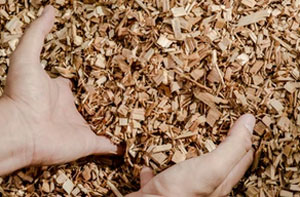
To process the vegetation, tree limbs and branches that tree surgery generates, most professional Oxford tree surgeons will make regular use of wood chipping devices. Subject to the equipment that is being used, these impressive wood chipping machines can munch up as much as 40 tons of material per hour, although approximately five tons each hour can be processed by the smaller, more commonly used machines.
Having numerous uses such as wood pulp, cultivating mushrooms, ecosystem restoration, weed prevention, garden walkways, biomass solid fuel, mulching gardens and landscaping, the chipped down timber is also less cumbersome to transport.
Generally, Oxford tree surgeons will take away all the wood chippings that are created by your tree surgery project, unless you want them for one of the above uses, in which case they will usually be glad to let you keep some. Whether or not you need any tree surgery doing, you will find that tree surgeons are an excellent source for wood chippings which you can use for various purposes in your garden in Oxford. If you need a load of wood chips to be delivered then certain tree surgeons will charge you a fee for this service, others let you take them for free.
Popular makes of wood chipping machinery include Crytec, Hyundai, Forest Master and Timberwolf.
Stump Grinding
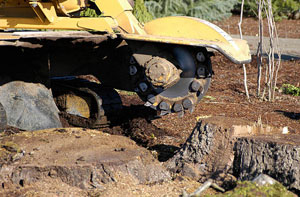
If you need to get some stump grinding undertaken on your property, you should hire a tree surgeon with the correct gear and knowhow. Qualified tree surgeons should always grind down every bit of tree stump to a good twelve inches below ground level. Grinding down stubborn stumps and roots quite close to walls and buildings without without damaging them, can only be accomplished if your tree surgeon has the use of the appropriate machinery. This purpose built grinding apparatus is so multifaceted that it can even remove tree stumps which are growing in alleys, passageways and similarly hard to get at locations. When you're doing away with a big tree the stump left over may be pretty enormous and no matter what you are planning to use the resulting space for, the probability is that the remaining stump will need to be removed a good foot below ground level. (Tags: Stump Grinding Oxford, Tree Stump Removal Oxford, Stump Removal Oxford)
Hedge Cutting Oxford
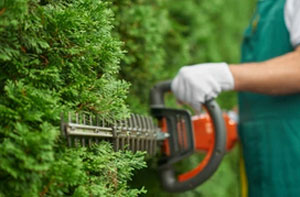
Whilst focused largely on specialist tree surgery work, tree surgeons in Oxford are often involved in the trimming and maintenance of hedges. In particular this is important for conifer hedges (Leylandii for example) which will often grow too tall for a homeowner or regular gardener to handle.
When a hedge is neglected and poorly maintained, it can become overgrown and out of control fairly quickly. Frequent trimming is recommended if you do not want a hedge to take over large parts of your garden in Oxford, and in addition to making the hedge stronger it will also add to its visual appeal.
Tidy hedges help to make your entire garden look neater, and might even add to the value of your home in Oxford, if you're planning to sell. You should also be able to obtain hedge cutting services in Risinghurst, Wytham, Cowley, Barton, Osney, Sunningwell, Marston, Iffley, Sandford, Summertown, Chawley, Cumnor, Littlemore, Headington, Kennington, Whitecross, Eynsham, Garsington, Wolvercote, and Oxford, Oxfordshire.
Emergency Tree Surgery Oxford
Although emergencies are rare in relation to trees in your garden, accidents can happen, therefore it may be a good idea to have an emergency number where you can reach a tree surgeon in Oxford. When there are strong winds and gales, tree surgeons in Oxford notice a spike in emergency call-outs, and some of them provide a 24 hour service. In stormy weather there's more potential for branches snapping off and falling onto property or passers-by, and even the risk of a whole tree toppling over. Prevention is certainly preferable to having to cope with the consequences, and commonplace problems that can be caused by falling tree limbs and branches include damaged fences, squashed sheds, cracked greenhouses and broken garden furniture.
When substantial branches break of and crash onto railway tracks, roads and public walkways, the local council in the Oxford area will also sometimes need emergency tree surgeons.
When a tree has lost some branches it can become lopsided or uneven, with more weight and branches on one side. This can be both unattractive and hazardous, so the tree may have to be "re-balanced". To handle all these various issues, you must call up a local Oxford tree surgeon who offers emergency tree surgery services.
Chainsaws

The most common tool that Oxford tree surgeons use is the chainsaw. It's a versatile and effective tool, but in the wrong hands, also a dangerous one. Thanks to their ease of use and greater portability, petrol driven chainsaws are the most preferred by tree care professionals, although battery and mains models are available. For effortlessly cutting through thick branches and limbs, petrol driven chainsaws are the only serious option effective option, being robust, powerful and able to contend with even the heaviest of tree work.
A chainsaw essentially consists of a rotating engine-driven chain which is lined with a row of teeth that cut through the bark of a tree and the wood beneath. Aside from what powers them, there are also a variety of styles of chainsaw for different operations, rear-handled for work at ground level (two handed), pole saws for long distance pruning and hard to reach branches and top-handled for working at height (and which can be used with one hand if required).
You will almost never find a tree surgeon in Oxford who doesn't use a chainsaw, despite the fact that climbing high up a tree with a spinning blade in your hand is not an especially safe thing to do. To be able to gain membership of the AA (Arboricultural Association), being fully trained in the safe use of chainsaws is one of the primary requirements for professional tree surgeons.
Although there are countless different chainsaw brands and models available to professional tree surgeons, the most popular ones the United Kingdom are Hyundai, Husqvarna, Stihl and Makita.
The Day to Day Tasks for a Tree Surgeon
- Be adept with power tools and equipment.
- Fell and remove trees and perform stump grinding.
- Maintain and service equipment like chainsaws and wood chippers.
- Cut and chip logs and branches.
- Establish hazards presented by trees.
- Evaluate the health of trees and prepare treatment plan.
- Produce tree survey reports for both commercial and domestic customers.
- Plant trees and vegetation.
- Tidy up work area upon completion and fulfil removal of waste product from customer's site.
- Work with customers and complete administration duties.
- Climb trees to prune or remove branches as required.
- Produce telephone or on-site price quotes with the customers.
Woodland Clearance Oxford
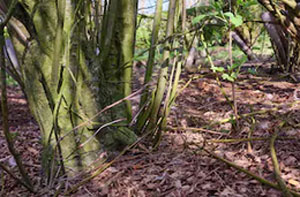
Woodland clearance in the Oxford area should only be undertaken after any restrictions and regulatory measures have been established and observed. A professional tree surgeon in Oxford will offer a full end to end service that will observe all laws and covenants on the land, and will also clear the area in an environmentally friendly way.
A thorough site survey will be performed by a professional tree surgeon who'll also liaise with woodland authorities and organisations to ensure that your clearance is done safely and legally. If it's discovered that protected plant or animal life is on the site that needs clearing, it may be necessary to relocate such species, if approved by the appropriate authorities.
The technical and extremely expensive equipment used in woodland clearances, means it is more cost efficient to engage a professional tree surgeon to take care of your clearance project.
Ash Dieback
A destructive fungal disease that's expected to decimate approximately 80% of the current British ash trees, in the next few years, ash dieback was first documented in Great Britain in 2012, when a nursery brought in a significant number of trees from the Netherlands. Ash dieback is likely to have an enormous impact on our countryside, exacerbating the destruction resulting from the Dutch Elm Disease (DED) crisis.
Trees of the Fraxinus genus are affected by this highly destructive disease, which has an especially disastrous effect on the common ash (Fraxinus excelsior), which is the native UK species. Thought to have originated in eastern Asia where the native species of ash (the Chinese ash and the Manchurian ash) were less susceptible, the fungus which causes the disease is called Hymenoscyphus fraxineus (H. fraxineus), and it obstructs a tree's water transport systems, causing it to die.
Readily spread by minute spores which are able to be blown for miles on the wind, ash dieback (or chalara ash dieback as it's often known) can be found in most areas of the British Isles with up to eighty five percent mortality rates.
Ash dieback is recognisable by the following symptoms:
- Leaves developing dark patches during mid to late summer.
- New epicormic growth appearing from buds that were dormant previously.
- Shoots and leaves which are dying during the summer.
- Wilting leaves that turn black and fall prematurely.
- Dark brown necrotic lesions form where branches connect to trunk.
To a certain extent, ash trees are able to fight the disease, but they ultimately succumb as they're repeatedly attacked every year. At present there is no clear-cut method for stopping the spread of aash dieback, and there is no cure.
While you can report instances of ash dieback to the Forestry Commission's "Tree Alert Service", it is now so commonplace throughout the UK that they're only really interested in cases which are found in locations not previously affected. If you think that you have a tree infected with ash dieback in your garden in Oxford, you should contact a local tree surgeon, who can offer guidance and advice on how to proceed - ultimately the tree will have to be chopped down and removed.
Trees which are affected by ash dieback: Fraxinus excelsior, EXTRAwoodland clearances, root decompaction Oxford, fruit tree pruning, crown reduction, tree lightening protection Oxford, tree care services, landscaping, crown removal Oxford, soil terraventing, woodchipping, damaged tree cutting and removal, tree fertilising in Oxford, drop crotching Oxford, removal of storm damaged trees in Oxford, root flare exposure, root removal, eco plug treatments, tree reduction, tree shaping, tree surveys, damage restoration Oxford, hedge lowering, the protection of trees from grazing animals, woodland management, dead wooding in Oxford, stump removal, root pruning, tree management in Oxford, hedge laying, crown liftingNINE.
(Tags: Identifying Ash Dieback, Chalara Ash Dieback Oxford, Ash Dieback Symptoms).Tree Surgery Tasks Oxford

Oxford tree surgeons will likely help you with woodland clearances, root decompaction Oxford, fruit tree pruning, crown reduction, tree lightening protection Oxford, tree care services, landscaping, crown removal Oxford, soil terraventing, woodchipping, damaged tree cutting and removal, tree fertilising in Oxford, drop crotching Oxford, removal of storm damaged trees in Oxford, root flare exposure, root removal, eco plug treatments, tree reduction, tree shaping, tree surveys, damage restoration Oxford, hedge lowering, the protection of trees from grazing animals, woodland management, dead wooding in Oxford, stump removal, root pruning, tree management in Oxford, hedge laying, crown lifting and other tree surgeon services in Oxford, Oxfordshire. These are just a selection of the activities that are conducted by a local tree surgeon. Oxford specialists will be happy to tell you about their full range of services.
Tree Surgeons Nearby
Also find: Wytham tree surgeon, Sunningwell tree surgeon, Wolvercote tree surgeon, Cowley tree surgeon, Cumnor tree surgeon, Marston tree surgeon, Chawley tree surgeon, Iffley tree surgeon, Garsington tree surgeon, Sandford tree surgeon, Osney tree surgeon, Kennington tree surgeon, Littlemore tree surgeon, Summertown tree surgeon, Barton tree surgeon, Whitecross tree surgeon, Headington tree surgeon, Risinghurst tree surgeon and more. Most of these localities are catered for by local tree surgeons. Householders in these places can get estimates for tree surgery by clicking here.
Tree Care Services Oxford
- Oxford Hedge Planting
- Oxford Root Removal
- Oxford Root Decompaction
- Oxford Tree Reshaping
- Oxford Dead Wooding
- Oxford Tree Transplanting
- Oxford Hedge Reduction
- Oxford Tree Watering
- Oxford Tree Bracing
- Oxford Root Grinding
- Oxford Crown Removal
- Oxford Tree Cutting
- Oxford Tree Maintenance
- Oxford Tree Replanting
More Oxford Trades: Undoubtedly, when you are having tree surgery done in Oxford, Oxfordshire, you'll likely be in need of other garden related services, and aside from a tree surgeon in Oxford, Oxfordshire, you may also need local SKIP HIRE in Oxford, topiary in Oxford, soil drainage services in Oxford, garden waste removal in Oxford, garden shed installers in Oxford, garden design and planning in Oxford, lawn mowing services in Oxford, patio installation in Oxford, hard landscaping in Oxford, gate installers in Oxford, garden pond installation in Oxford, weeding services in Oxford, garden clearance in Oxford, artificial grass installers in Oxford, block paving in Oxford, garden decking in Oxford, and other different Oxford tradespeople.
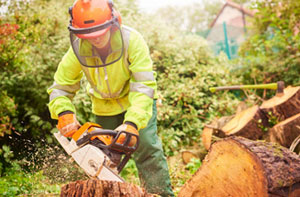 Tree Surgeon Oxford
Tree Surgeon Oxford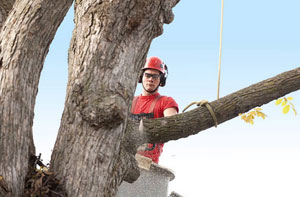 Tree Surgeons Oxford
Tree Surgeons Oxford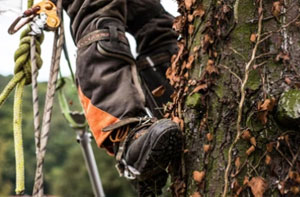 Tree Surgery Oxford
Tree Surgery OxfordIf you need local Oxford information go here
Tree Surgery OX1 area, and dialling code 01865.
Arboriculture Oxford - Tree Management Oxford - 01865 - OX1 - Tree Care Oxford - Tree Surgeons Oxford - Tree Surgeon Oxford - Vegetation Management Oxfordshire - Tree Reshaping Oxford




